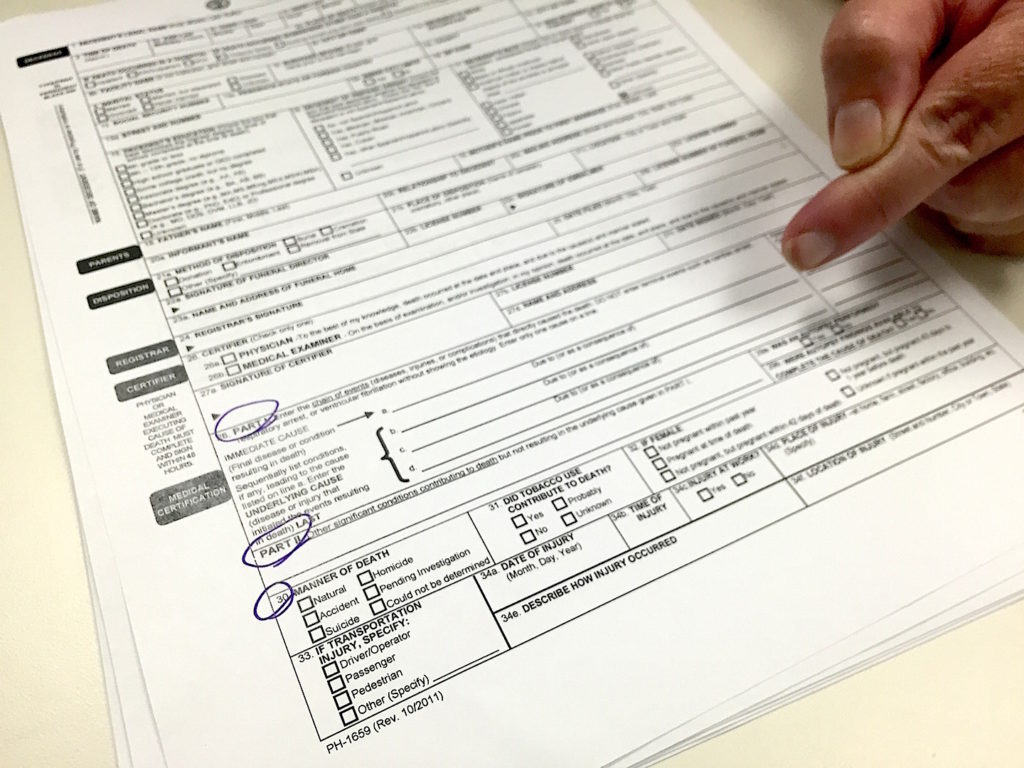
A massive over-reporting of Tennessee’s fatal accidental shootings has drawn attention to how state officials count gun deaths, revealing that there’s often a gap between how the public might refer to an “accident” and the standard used by medical examiners.
Last month, Tennessee health officials reported an error with the number of unintentional gun deaths in 2014. The initial count of 105 would have led the nation, but a revision brought the number down to just five.
Medical examiners have to classify all deaths as natural, homicide, suicide, accidental or undetermined.
“You would think it would be easy … but obviously it’s much more nuanced and complicated,” said Adele Lewis, Tennessee’s deputy chief medical examiner.
For Lewis, accidental shootings make for tough data collection. She said the dramatic moments of a shooting can make narratives unreliable and physicians uncomfortable because of stigmas surrounding gun violence.
The state’s recent revision of the number set off a round of questioning about the accuracy of the data.
One skeptic was a Tennessee blogger known as
Southern Beale, who collects news stories about gun incidents. She gathered a list of 13 incidents from media reports that seemed to suggest accidental gunfire. Southern Beale declined to be interviewed, by name, for this story.
Lewis cautions against data based only on media accounts.
“Don’t take it personally, but the media reports aren’t always the most reliable source of information,” Lewis told WPLN.
After the state revised its 2014 statistic, Lewis’s team agreed to review Southern Beale’s list of additional incidents. That review did not turn up any additional accidental gun deaths.
“If you go back and follow-up, you will find that some of those people involved in those shootings are being prosecuted for homicide,” Lewis said. “It turns out then that someone else has fired a gun and shot someone, or they’ve fired the gun themselves.”

Lewis’s team finds that details change between a story and the official death certificate.
Even then, medical examiners use criteria beyond what the public might refer to as an “accident.” She used hunting as an example, in which an errant bullet might be commonly referred to as an accident, while a forensic pathologist would likely classify it as homicide.
In a game of “Russian Roulette,” in which a gun is fired without knowing if a bullet is in the chamber, the ruling would generally be “suicide,” Lewis said, because of the clear risk of self-harm.
And in cases in which guns are alleged to have malfunctioned — for example, if dropped on the floor — the weapon must be tested in a ballistics lab before being blamed.
“Properly functioning guns do not discharge without someone pulling the trigger,” Lewis said. “The idea of an accidental shooting is very rare in the (medical examiner community).”
There’s also a chance the numbers skew toward overestimating accidents, Lewis said.
“For the county medical examiners who are there, maybe in a small rural county … know the families of the people who are dying of gunshot wounds, … there is a stigma attached to suicide and they don’t want to call it a suicide,” she said.
Health officials haven’t pinpointed any one reason for the recent miscount. (So far, they know that the initial 105 count included gun-related deaths, but that many were incorrectly marked as accidental.)
Meanwhile, through an ongoing project, Lewis’s team has been coaching medical examiners on how exactly to fill out the death certificates that inform state and federal statistics.


